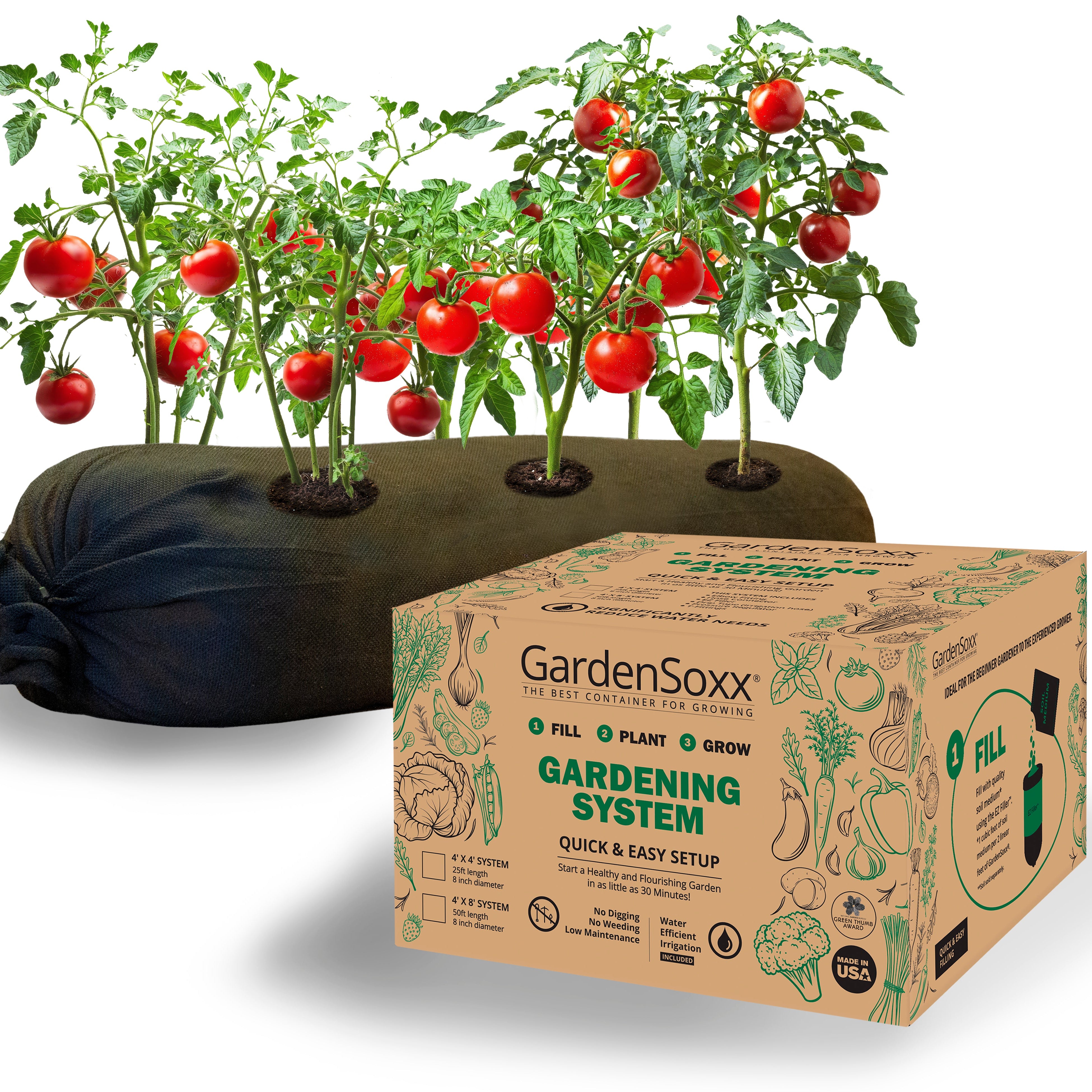Raspberries
Like other berries, these little red gems pack a nutritional punch that makes their delicious flavor seem even sweeter. High in vitamin C, fiber and antioxidants, learning how to grow raspberries will allow them to become an easy addition to your daily diet.
Their palatable and widely-loved taste make them perfect for stirring into yogurt or oatmeal, throwing into a smoothie, baking into delicious treats or just enjoying on their own as a snack. Getting a daily dose of raspberries will help boost your immune system, keep your digestion moving, support your heart health, and can possibly help to prevent certain types of cancer.

Growing raspberries in GardenSoxx® | Plant Family: Rosaceae
Different Varieties of Raspberries
While home gardeners have a wide selection of different varieties of raspberries to choose from, there are factors that will influence which variety is most ideal for you, as some require more maintenance than others.
The popular Polana Raspberry is a hardy variety that grows well in northern climates, fruits early and offers a high raspberry yield per plant. The plants are also compact, making it a great choice for home gardens.
One of the more common thornless raspberry varieties is Eden, a highly productive cultivar with tall, strong canes that produce fruit through mid-summer until fall. Although it will only start producing after its first year, its sweet fruits are thought to be the largest raspberry variety on the market.
For those who want to try growing golden raspberries, the rare Fall Gold variety may be more difficult to find, but will typically produce more than one crop per season of absolutely delicious, bright yellow berries.
Great for colder climates, the Royalty raspberry variety produces an abundance of deep purple fruits that have an excellent flavor. The plant itself is relatively low-maintenance and resistant to frost.
Nutritional Information For Raspberries
Nutritional Facts - per 100/g
| Nutrient | Amount | % Daily Value |
|---|---|---|
| Calories | 53 | - |
| Total Fat | 0.7 g | - |
| Sodium | 1 mg | - |
| Potassium | 151 mg | - |
| Dietary Fiber | 7 g | - |
| Sugar | 4.4 g | - |
| Protein | 1.2 g | - |
| Vitamin C | - | 43% |
| Iron | - | 3% |
| Vitamin B6 | - | 5% |
| Magnesium | - | 5% |
| Calcium | - | 2% |
How to Grow Raspberries in Your GardenSoxx®
Grow raspberry bushes in an area that gets shelter from the elements, but is exposed to full sun. Like with other berry varieties, raspberry bushes can take a couple of years to bear fruit when planted from seed - so we recommend starting with already established canes from a reputable nursery if possible.
Raspberries Seed to Harvest Time: 18 - 24 months

How to Harvest Raspberries
Once berries start to mature and ripen, pick them every few days to get a continuous harvest. Picking them later in the day, once the morning dew has been dried by the sun, ensures they will not go moldy. Only wash raspberries once you are ready to eat them.


















































